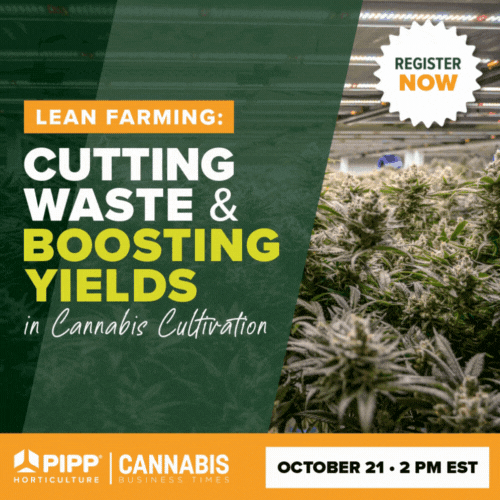
Although many cannabis cultivators and dispensaries select and promote cannabis varieties based on an indica/sativa dichotomy, Andrea Sparr-Jaswa, director of education for Oregon’s vertically integrated Farma PDX, says this classification leaves much to be desired.
Instead, Farma organizes the flower display at its dispensary based on chemotypic data pulled from genetic and lab testing reports, which Sparr-Jaswa says helps the staff better recommend cultivars to its customers and in turn builds customer trust.
Here, Sparr-Jaswa outlines why sativa and indica classifications are problematic, and how cultivators and dispensaries can instead select and market cannabis varieties based on their cannabinoid and terpene content.
Cannabis Business Times: What’s the biggest misconception consumers and producers both make when classifying cannabis?
Andrea Sparr-Jaswa: The language that we continue to use to discuss the vast and varied experiences cannabis can offer. The indica/sativa dichotomy—not only is the classification itself still a bit controversial, but it doesn’t even touch on all the therapeutic effects and actions. It’s not all up and down and in between. There are so many nuances and variations that can make or break a first timer’s experience or a longtime user’s expectations. It’s not “a one size fits all” sort of drug. No drugs are, but cannabis is a uniquely polypharmaceutical plant that defies that notion of single-compound, single-target pharmacology, and we should be acknowledging and harnessing that power. How can we do that in the absence of data that goes beyond this dichotomy that we so pervasively use?
RELATED: Rethinking Strain Names
CBT: What can we learn from cannabinoid and terpene content, and how can we better select and market the product?
ASJ: Both cannabinoid and terpene content help to determine therapeutic effects and actions. It also defines the character of the experience a person is likely to feel, and that can make all the difference for somebody who is using it to treat symptoms during the day but needs to be highly functional, or somebody who is using it “recreationally” to relax in the evening. If we’re just saying it’s indica [or] sativa, that doesn’t speak to the clarity or lucidity of a strain or the grogginess or the stoniness of a strain. It doesn’t speak to the therapeutic promise of a strain in actually treating anxiety because of a high THC content. We need to know all of that data in order to better predict the effects a person is likely to feel. That’s still only half the picture. We aren’t mapping endocannabinoid systems yet. We don’t know what kind of endocannabinoid system deficiencies a person might have, and that’s certainly something we need to be looking toward and many people are eagerly awaiting that research.
At this point, dispensaries aren’t responsible for procuring that data unless they have a vertically integrated grow like Farma does, [and] they’re not running that data in-house. There are third-party labs that are being used to look at that data, and it’s on the growers and then on the dispensaries, as well—in talking with growers and deciding which growers to use—to ask for that data so that we don’t just have THC and CBD measurements [and] we have a better idea of how clear or how stony or how euphoric or how calming something is going to be. And by doing that, we can help to create unique experiences for people who are just looking for that joyful THC high, and we can also make more consistent recommendations in terms of therapeutics for people who are looking to treat symptoms.
This isn’t just about dispensaries—this is about growers. By accessing data, by looking at the data of each individual chemovar that they’re growing, not only are they going to be able to get more consistency and stability in their unique proprietary cultivation—which are going to help them make a name for themselves as new strains come online—but they’re also going to be able to stay ahead. At this point, there are studies that are starting, looking at terpene content, looking at minor cannabinoid content, and that will be the way of the future. So, why not get in on it now? Why not be a part of that scientific discovery?
CBT: How does Farma test its products for cannabinoid and terpene content?
ASJ: Dispensaries generally aren’t responsible for testing product unless there is vertical integration, in which case that grow is sending it out to a third-party lab for testing. But Farma was the first to lay out their flower display in a way that spoke to chemotypic data. So, rather than relying on indica/sativa duality, we’re asking our growers to get the lab reports that go beyond the THC and CBD and minor cannabinoid concentrations and pull up what those terpene concentrations are so that we can look at it in the shop and take those data points and analyze them against one another, play them off one another.
Farma specifically works with Phylos Bioscience to make sure that any number of strains that we have on our shelf are in fact genetically tested as they are. A Blue Dream is really a Blue Dream. A Durban Poison is really a Durban Poison. We use all of that data—the genetic data, the lab data—to then create a spectrum of effect in our display that goes anywhere from something that is more likely to be intensely stimulating—whether that’s physically stimulating or cerebrally stimulating or both—to something that’s much more likely to produce a heavy body effect and a quieter mind. You’ll see a particular strain name come up and play out around the case and you’ll have people come in and say, “I always thought that one was a sativa.” Well, it’s not always an energizing effect. It just depends on how the grower’s growing it, what kind of genetics they’re pulling from. Is it really, truly the genetics that they thought they had? So many things come into play, and we try to look at all of that data that we have at our disposal.
CBT: Why is it important for dispensaries and cultivators to get this right?
ASJ: Ultimately, it comes down to trust. Not everybody coming into the shop has had a good experience with cannabis. Not everyone is excited about the idea of a change in headspace. We need to be able to have data to create trust in those customers. It’s not just for the people who are nervous about it, too. The people who have had decades of experience of smoking cannabis every single day still can have unique and eye-opening experiences when guided toward a specific effect that they’re looking for. Maybe they have had access to this particular strain, they know they love it, but I don’t have that on the shelf. I know that particular strain generally produces these particular compounds, and therefore I can look at those particular compounds and compare to what I do have in the case and make a recommendation for them.
Growers aren’t producing the classics that they used to as much. You don’t see as many Blue Dreams. You don’t see as many Skunks. So, half the stuff on the shelf is stuff that’s completely new to everyone in terms of the strain name. The strain name or the genetics aren’t necessarily a reliable source anymore because they’re so deep into the experimentation of cultivation. So again, without that data, it’s difficult to determine what an effect is likely to be unless you try it yourself, and even that is subjective. Certainly, subjective, anecdotal experience comes into play, as well, and we rely on that in the absence of data or even with data, but you shouldn’t have to keep up with the case at your dispensary and smoke on a daily basis to make sure you’ve tried everything to be able to make a recommendation for somebody. With that data, we’re able to make better recommendations, both in the shop and as physicians and the medical community come online, they’ll be able to make better recommendations, as well.
CBT: How can we learn more about cannabis’s genetic history—and those hybridized cultivars people are growing, buying and selling now?
ASJ: Phylos Bioscience here in Portland is a pretty remarkable entity. There are others doing what they’re doing, but it’s a great resource for genetics. They’re mapping the cannabis genome to show relationships between chemovars—both classic chemovars and excitingly experimental chemovars. Growers are responsible for submitting data for them to analyze. They’re small samples. They’re pieces of stems so they can literally be transported internationally. There’s no issue of illegality there. They’re able to not only source material from growers, but they’re also able to source material from landrace strains, from old bags of weed found in cargo ships 5,000 years ago, and they’re able to take that data and put it onto the Phylos Galaxy. It’s this interactive, scientific tool that visually maps those genetics in relationship to each other.
RELATED: Phylos Bioscience Brings Transparency to Cannabis Industry Through Genetic Testing
In addition, they’re also working with programs like Open Cannabis Project, which has created a living archive of both the proprietary genetics of the growers and all of these rare landrace and classic cultivations, but very specifically with those proprietary genetics because they’re creating an archive aiming to protect small growers in an era of emerging patents. Now, there is some precedent for the fact that they grew this particular strain, and as larger companies come online and try to take things into their own hands and control them, there’s now data that supports these smaller growers, as well, and that is incredibly important.
Editor’s Note: This interview has been edited for style, length and clarity.

























